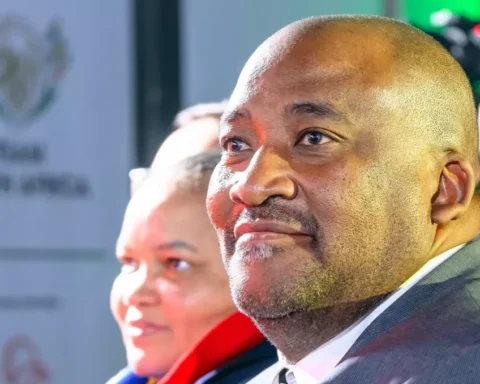Johannesburg – Zimbabwe is among the countries with high TB burdens that achieved treatment coverage levels of more than 80 per cent, in 2018, the World Health Organisation (WHO) reveals in its latest Global TB Report.
In the same report South Africa is listed among countries where people suffer most. The other countries include China, India, Indonesia, Nigeria, Pakistan and the Philippines.
However, the report also points out that Brazil, China, the Russian Federation and Zimbabwe – all of which have high TB burdens – achieved treatment coverage levels of more than 80 per cent, in 2018.
The same year around 10 million people developed TB and three million sufferers were “not getting the care they need”.
A staggering 1.5 million people died from tuberculosis (TB) last year, the UN health agency said on Thursday, in an appeal for far greater funding and political support to eradicate the curable and preventable disease.
Caused by the bacteria Mycobacterium tuberculosis, TB commonly causes persistent coughing, fatigue and weight loss.
“Nonetheless, although the 2018 TB toll was marginally better than in 2017, the burden remains stubbornly high among poor and marginalised populations, particularly those with HIV,” the reports says.
“One of the reasons for this is the cost of TB care, with data showing that up to four-fifths of TB patients in so-called ‘high-burden’ countries spend more than 20 per cent of their household income on treatment.”
The report also found that drug resistance remains another obstacle in tackling the disease.
With 2018 seeing an estimated half a million new cases of drug-resistant TB, WHO says only one in three of these people was enrolled in treatment.
The report recommends that multi-drug resistant TB should now be tackled with fully oral regimens “that are safer and more effective”.
Insisting that the world must accelerate progress if it is to reach the Sustainable Development Goal of ending TB by 2030, WHO Director-General Tedros Adhanom Ghebreyesus said that in practice, this required “strong health systems and better access to services. That means a renewed investment in primary health care and a commitment to universal health coverage.”
Following last month’s commitment by Heads of State at the UN in New York to make healthcare available to all and address communicable diseases like TB, HIV and malaria, WHO highlighted the value of “comprehensive” national campaigns that could diagnose and treat several ailments at a time.
The UN agency cited “better integrated” HIV and TB programmes that have led to two-thirds of people diagnosed with TB now knowing their HIV status, for which they are now taking treatment.
WHO also welcomed the fact that seven million people were diagnosed and treated for TB last year – up from 6.4 million in 2017.
This was “proof that we can reach global targets if we join forces together, as we have done through the ‘Find.Treat.All.EndTB’ joint initiative of WHO, Stop TB Partnership and the Global Fund to Fight AIDS, TB and Malaria”, the WHO Director-General said.
Echoing that message, Dr Tereza Kasaeva, Director of WHO’s Global TB Programme confirmed that WHO is working closely with countries, partners and civil society on innovations “to break the trajectory of the TB epidemic”.
The report indicates that there is massive and chronic underfunding for TB research estimated at $1.2 billion a year. On top of this, the shortfall for TB prevention and care is estimated at $3.3 billion in 2019.
About one-quarter of the world’s population has latent TB – these are people infected by TB bacteria but are not yet ill with the disease, so they cannot transmit it.
The report said priority needs include a new vaccine or effective preventive drug treatment, rapid diagnostic tests and safer, simpler, shorter drug regimens.
The World Health Assembly-approved Global TB Strategy aims for a 90 per cent reduction in TB deaths and an 80 per cent reduction in the TB incidence rate by 2030 compared with 2015 levels.
The strategy established milestones for 2020 of a 35 per cent reduction in TB deaths and a 20 per cent reduction in the TB incidence rate compared with 2015.








